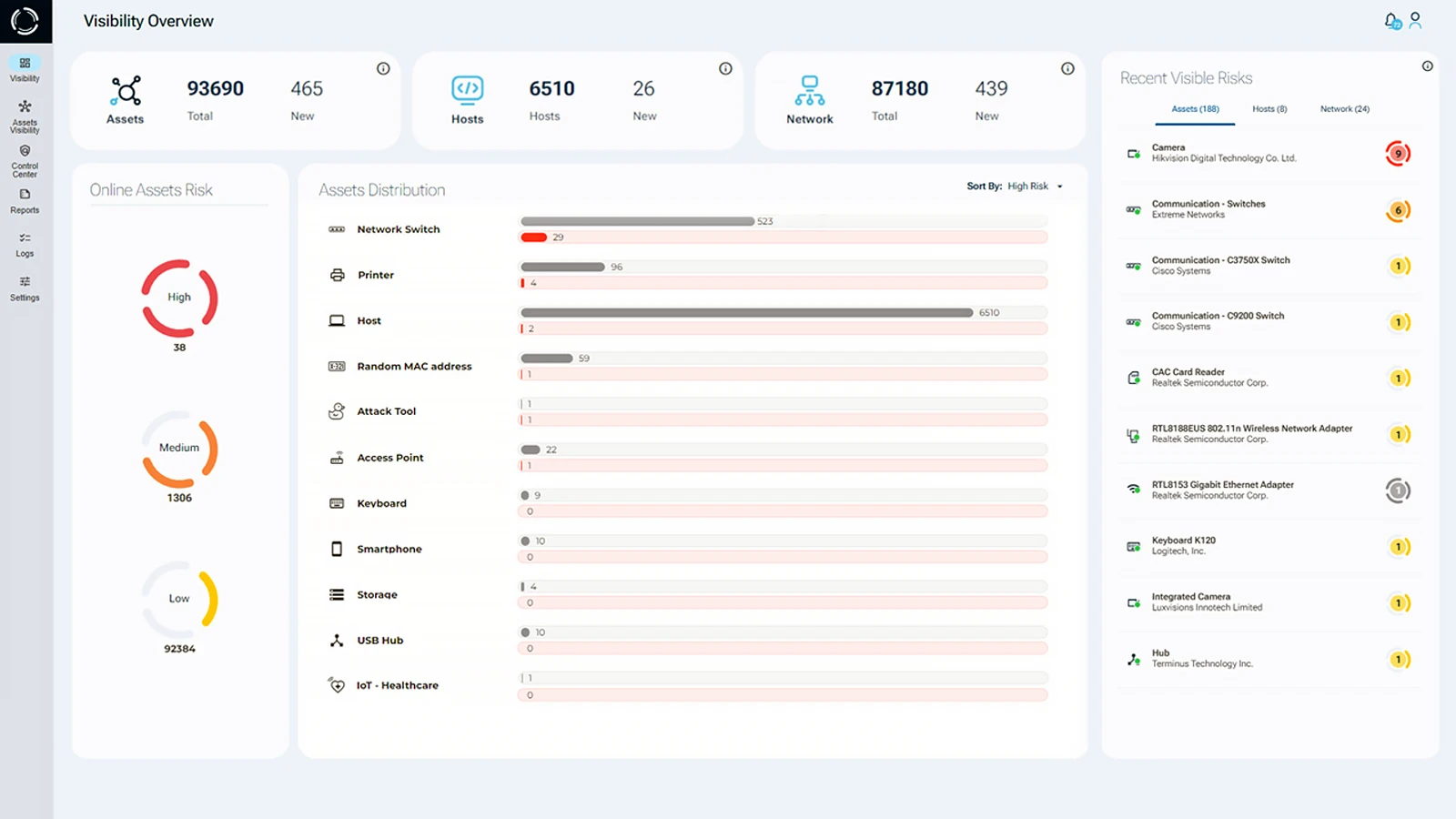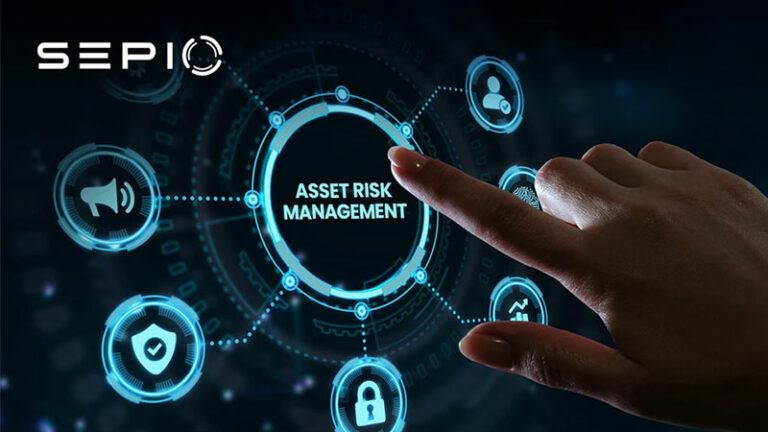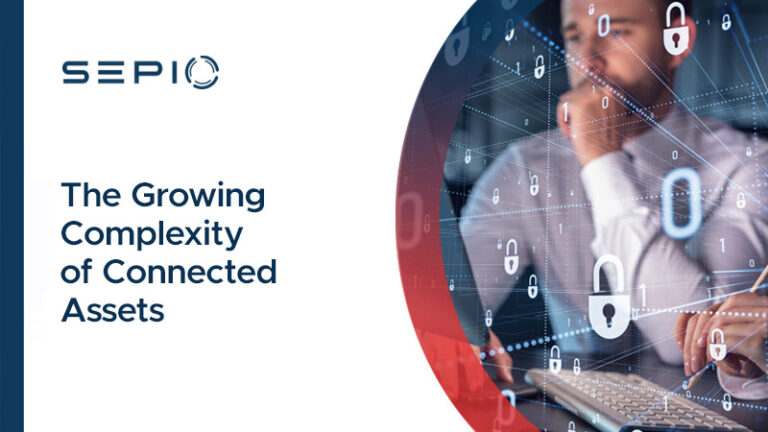What are Hardware Asset Risks?
Hardware asset risks refer to the security, operational, and financial threats associated with physical IT assets, like computers, servers, printers, networking equipment, USB devices, and IoT devices, used within an organization. These risks can compromise business continuity, data integrity, and overall cybersecurity posture.
The escalating hardware asset risks posed by sophisticated cyber threats present a serious challenge for organizations of all sizes. The potential attack surface has expanded dramatically. With the proliferation of connected devices, the convergence of IT, OT, and IoT networks, and the rise of hybrid work environments, it has become increasingly difficult for organizations to protect their physical assets.
Security risks are no longer limited to just securing the perimeter of an organization’s network. In today’s highly connected world, attackers have more entry points than ever before. They can exploit devices, network ports, and even individuals to gain access to sensitive data, disrupt operations, or cause physical harm.
Hardware Asset Risks Management
As cyber threats continue to evolve, organizations must stay ahead of the curve by implementing robust asset risk management (ARM) measures that can protect their entire asset surface. Managing hardware asset risks requires a granular approach that considers various factors such as potential risk, asset location, user behavior, compliance requirements, device accessibility, and business criticality. However, this can be a daunting task due to the diversity of devices in the asset surface, data overload, and the constantly changing threat landscape.
Cyberattacks targeting financial institutions, critical infrastructure, and healthcare organizations have increased in the United States in recent years. These attacks have resulted in significant financial losses and disrupted operations. Addressing hardware asset risks is critical in preventing these types of breaches.
To address this, the US government has implemented various cybersecurity regulations. Covering federal agencies, financial institutions, healthcare providers, and critical infrastructure companies. For example, the Cybersecurity and Infrastructure Security Agency (CISA) issued Directive 23-01 in 2021 to strengthen security measures for federal agencies. Healthcare providers must adhere to the Health Insurance Portability and Accountability Act (HIPAA) regulations. Which mandate safeguards to protect patient health information. Electric utilities must follow the North American Electric Reliability Corporation Critical Infrastructure Protection (CIP) standards to safeguard the reliability of the power grid. Finally, the Federal Risk and Authorization Management Program (FedRAMP) provides a standardized approach to security assessment, authorization, and continuous monitoring for cloud products and services used by the federal government.
IoT Devices and Cybersecurity Asset Risks
The rapid growth in the number of connected devices, such as IT, OT, and IoT devices, has created new vulnerabilities for organizations, making them more susceptible to cybersecurity asset risks. The sheer volume of connected devices multiplies the number of potential entry points for hackers to breach an organization’s security systems. Many of these devices are also poorly secured. Lacking adequate cybersecurity features, and often have default passwords that are easy to guess or are not updated regularly. These asset risks vulnerabilities are further amplified as different technologies converge on organizational networks. Making it more challenging to manage, assess, and protect a complex and evolving asset surface against attackers.
Asset Risks and BYOD
The increasing trend towards hybrid working, bring your own device (BYOD), and remote access to corporate assets can pose significant cybersecurity asset risks for organizations. All of these can potentially allow employees, contractors, and even inadvertent device users to significantly impact an organization’s cybersecurity in multiple ways. Insecure and risky devices may introduce ransomware to enterprise networks, can be easily hacked. Or may have weak passwords or no password protection at all, and might have unpatched vulnerabilities that can be exploited. With employees using a wide variety of devices to access corporate resources, there is a greater likelihood of introducing malware, viruses, or other types of attack vectors to the network can lead to unauthorized access to sensitive data or loss of critical information (Internal Threats).
This is where the newest version of our platform, Sepio, comes in. Our product’s value proposition to customers is simple: “Manage asset risks with granular controls based on Asset DNA.” We provide a comprehensive solution that addresses the pain points that organizations face when protecting their asset attack surface from cybersecurity asset risks.
Asset Visibility: See What You’ve Been Missing with Asset DNA
Sepio’s patented machine learning technology revolutionizes asset visibility across your enterprise network and endpoints. Providing effortless and continuous monitoring down to the peripherals. Sepio’s Asset DNA accurately identifies all assets based on their physical nature. Ensuring that your organization can trust each device’s identity and detect any unauthorized or rogue devices. From unseen and actively evasive assets to spoofed devices, compromised hardware, and unauthorized assets connected to your network, Sepio’s improved asset visibility feature eliminates blind spots and provides comprehensive visibility into your IT/OT/IoT/peripheral assets.

In addition to enhancing security, managing cybersecurity asset risks is crucial for compliance with cybersecurity regulations. With Asset DNA, organizations can quickly identify any non-compliant devices throughout their network, down to the endpoint’s peripherals. Sepio’s scalable solution offers unparalleled visibility of all IoT, OT, and IT assets in a single pane of view with minimal effort. Our low total cost of ownership and trafficless solution make asset licensing management cost-effective. Our easy deployment time frames ensure a fast time to ROI, even in large deployments. Experience unparalleled asset control with Asset DNA by Sepio, trust what you see, and say goodbye to blind spots.
Granular Policies: Fine-Tune Your Cybersecurity
Sepio’s granular policy creation features allow you to maintain fine-grained control over your entire asset surface down to the peripheral level. Springboarding off our unique physical layer-based Asset DNA, you can set exact conditions for any of your assets. Including device type, physical location, business unit/function, or any other custom-defined parameter. Our predefined responsive actions for remediation enable you to configure the platform to block, allow, or notify for a specific device, occurrence, or risk type. Our multi-layer, granular policies offer unparalleled asset parameterization, going beyond industry-standard parameters like VID/PID, IP address, and MAC addresses. This level of policy customization enables you to fine-tune your cybersecurity measures to the last device, offering precise control over your cybersecurity asset risks.
Ensure Uniform Security Across Your Dynamic Asset Surface
Sepio’s automated enforcement delivers 24/7 precise control over dynamic asset surfaces. Without the need for human intervention, enforces policies uniformly across endpoints and networks . Our seamless integration with third-party cybersecurity, network management, and IT tools expands your arsenal of potential actions to meet your specific preferences and optimize resource utilization. By automating the mitigation of cybersecurity asset risks, organizations can reduce response times and minimize the costly impact of cybersecurity incidents.
Gain Complete Visibility and Control Over Your Assets
Uncover every known and shadow asset in your network, prioritize risks, and take immediate action to mitigate them. Talk to an expert. Discover how Sepio’s patented technology can help you gain full control over your asset risks and ensure comprehensive protection for your organization.






